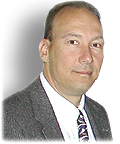
 |
NU9N SSB Audio News Editorial - November, 2003
|
Knowing Your Transmitter's Limits
 Before you go crazy, know your transmitter ! Before you go crazy, know your transmitter !
I had a very interesting discussion recently regarding those who use excessive EQing in an attempt to expand their transmitter's frequency response well beyond it's filter limits.
While there are certainly benefits to EQing and processing audio before feeding it to the transmitter, there is a point where overprocessing may occur, causing unwanted sideband energy, I.M.D. products and distortion, especially with non-DSP
analog based transceivers.
Some transceivers are more forgiving than others when being pushed with equalized signals. The Kenwood TS-950SDX, for example, can still operate very cleanly even when EQ energy 2kHz above the rigs reported frequency response. This is due
to a more relaxed DSP restriction than that of the Kenwood TS-870S when fed with the exact same equalization! The Kenwood TS-870S will start distorting if any emphasis is applied above about 4.2 kHz.
The point is this; Know your transmitter's limits and be reasonable. Do not try to force 20dB of 5kHz EQ'ed energy into a transceiver that will naturally roll-off at 3kHz. The same applies to the low frequencies... You do NOT need 20dB
of boost at 30 or 40 Hz, since (1) your transmitter will probably not reproduce these frequencies anyway and (2) there is not a human voice in the world that has appreciable energy at these wall-shaking frequencies.
A smarter way !
The best approach is simply this: Only send an audio passband to the transmitter that it can deal with. What I do is set up suppression frequencies both below and above the desired passband I want to send to the transmitter. For example,
I suppress all frequencies below 40Hz by -48dB, and all frequencies above my desired top frequency by -48dB using my digital EQ (Behringer DSP-1100P), taking advantage of the extremely narrow Q's this EQ is capable of. If I want the top
frequency to end at 4kHz before it gets to the transmitter, then I set up a filter at 5kHz, a bandwidth of 1/4 octave and a cut of -48dB. For the low-end filter, I set the EQ for 20Hz, a bandwidth of 1/6 octave and a cut of -48dB. This
way, my transmitter will never see anything below 40Hz or above 4kHz. Combine this with the skirts of the I.F. filters, little or no ALC, and proper level adjustments in the audio chain, and you will end up with a signal that is both pleasing
and pure!
As a general rule of thumb, most transmitters can cleanly handle a little EQ'ed energy up to about 1kHz above the highest advertised frequency. If your manual tells you 3kHz, than do not exceed 4kHz with your EQ, etc... The only exception
to this is using a well adjusted compressor/limiter with plenty of gain reduction at the higher frequencies that keep the transmitter from being oversaturated with frequencies that may cause distortion or I.M.D. products. But be careful
here also, because over compressing the audio can sound very "Pumped" and "Squashed" if not applied to just the high frequencies.
With a little experimentation, a good oscilloscope and some common sense, you should be able to find what will work for your station. Have fun and stay clean... It will sound better, and will be friendlier to your neighbors !
73,
-John Anning, NU9N
|
|


